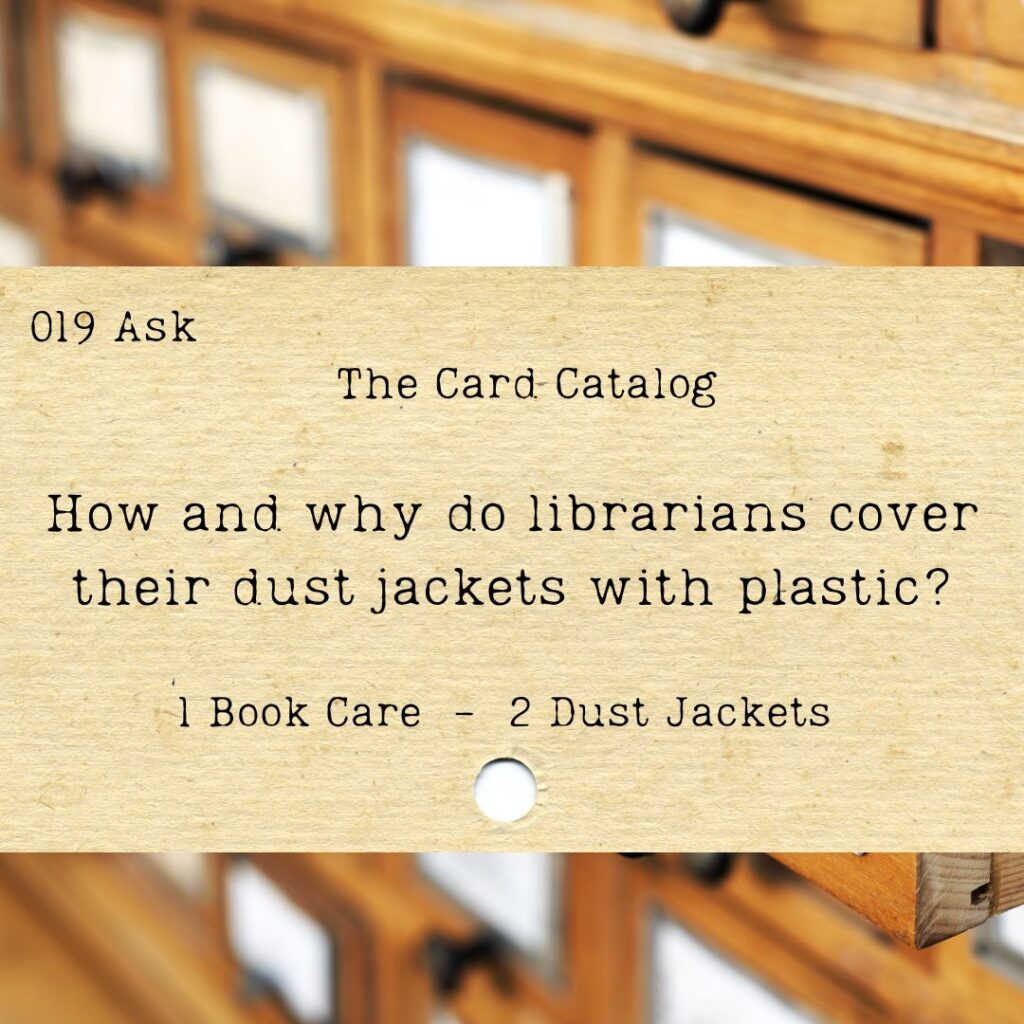
Why cover the book jackets (dust covers) with plastic? In fact, why keep the book jackets at all?
Some people find book jackets, aka dust jackets or dust covers, annoying, but most librarians want to keep and protect these covers on the books that have them for several reasons.
- Book jackets, especially those that are covered with Mylar plastic, do protect the book from dust, hence the alternative name “dust cover.” They also protect the book from moisture and spills and stains and general wear to some extent. This protective jacket will make your books last longer.
- Most book jackets feature relevant and inviting information about the book and its author on the inside front and back flaps. The book will probably have a brief blurb or description of the book’s content on the front inside flap. This blurb invites the prospective reader into the story and tells him something about what to expect, a sort of sales pitch for the book. On the back inside flap, the book jacket often tells something about the author or the illustrator or both or gives titles of other books in the series or other books by the same author. The back of the book jacket may give even more information about the book.
- The books, especially those that do not have pictorial covers, just look better and more inviting with a nice cover picture on a book jacket. If you have ugly books, you can even make your own cover picture, either hand drawn or copied and make those books look much more appealing with a bright new book jacket. Whether they should or not, readers often do judge a book by its cover.
- When I was about ten or eleven, I was very reluctant to check out any book that did not have a nice, shiny book jacket on the outside. I thought the books with the book jackets were the best books because they were the newest books, and I erroneously thought that new and good were somehow synonymous. Of course, I later learned that old books can have book jackets and that new books can be very poorly written, but if the librarian can make the book have “cover appeal” for unsuspecting children with a lovely book jacket, why not?
So, if you’re convinced that book jackets are the gold standard, you need to know how to go about covering the book jacket with Mylar plastic. The paper book jacket is the pretty part; the plastic is the protective layer. First, purchase your supplies. Book jacket cover materials, often called Mylar covers or just plastic covers, come in all sorts of sizes and configurations. You can get them in 8″ to 14″ to conform to the height of your books, and the width can also vary. You can also order the cover material on a roll, which is an initial investment but cheaper in the long run.
You may want to watch one or more of the following videos before you buy your supplies. Each librarian does the job a little bit differently and uses similar but different supplies. There’s no one right way. Choose the method and the supplies that suit you, and cover your books–for protection and curb appeal!
Esther Uribe, a librarian on YouTube, gives simple step-by-step instructions on how to use a mylar cover to protect a paper dust jacket for library books. You’ll notice that this librarian tapes the book jacket cover to the book itself instead of keeping the tape only on the plastic cover. I prefer this method, but many other librarians do not want to tape anything to the cover of their precious books. Again, your books, your choice.
How to apply Brodart Book Jacket Covers to hardcover books. From the library supply company, Brodart, this is a sales video, but it also simply demonstrates how to cover a dust jacket.